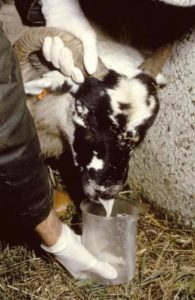What Can Be Done About OPA/Jaagsiekte?
1 July 2015OPA (Ovine Pulmonary Adenocarcinoma) also known as Jaagsiekte is a tumour within the lungs of sheep caused by a virus. Infected sheep are typically thin, lag behind the rest of the group when gathered and often struggle to breathe.
In advanced cases fluid may be seen flowing from their nostrils due to accumulation in the lungs. There is no effective treatment or vaccination for OPA. Post mortem examination is required to make a diagnosis as there is no reliable diagnostic test in the live animal.
Sheep become infected by breathing in the virus excreted from infected sheep. Therefore situations when sheep are in close contact are ideal for spread of the disease.
It is almost impossible to completely eliminate OPA from a flock once it is infected however the following management practices can help to reduce disease spread and losses:
- Regular flock inspections and culling of any thin, breathless animals lagging behind the flock.
- Offspring of culled animals should not be kept on for breeding. They frequently go on to develop OPA.
- Areas that housed suspect OPA sheep should be thoroughly disinfected after as lung fluid contains high concentrations of virus which can persist in the environment.
- Try and minimise close contact between sheep. This may be achieved by reducing the time sheep are housed, reducing stocking density and increasing trough space.
- Snatching of lambs and motherless rearing has been successfully used to rear OPA free offspring but realistically this is only practical for small pedigree flocks
Flock specific controls should be discussed with your own veterinarian.
Lynn Gibson, lynn.gibson@sac.co.uk
Sign up to the FAS newsletter
Receive updates on news, events and publications from Scotland’s Farm Advisory Service

